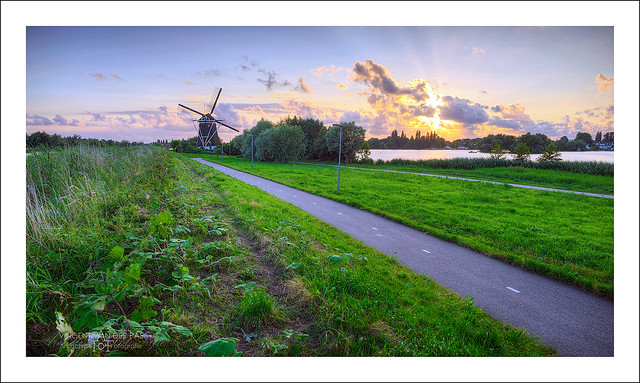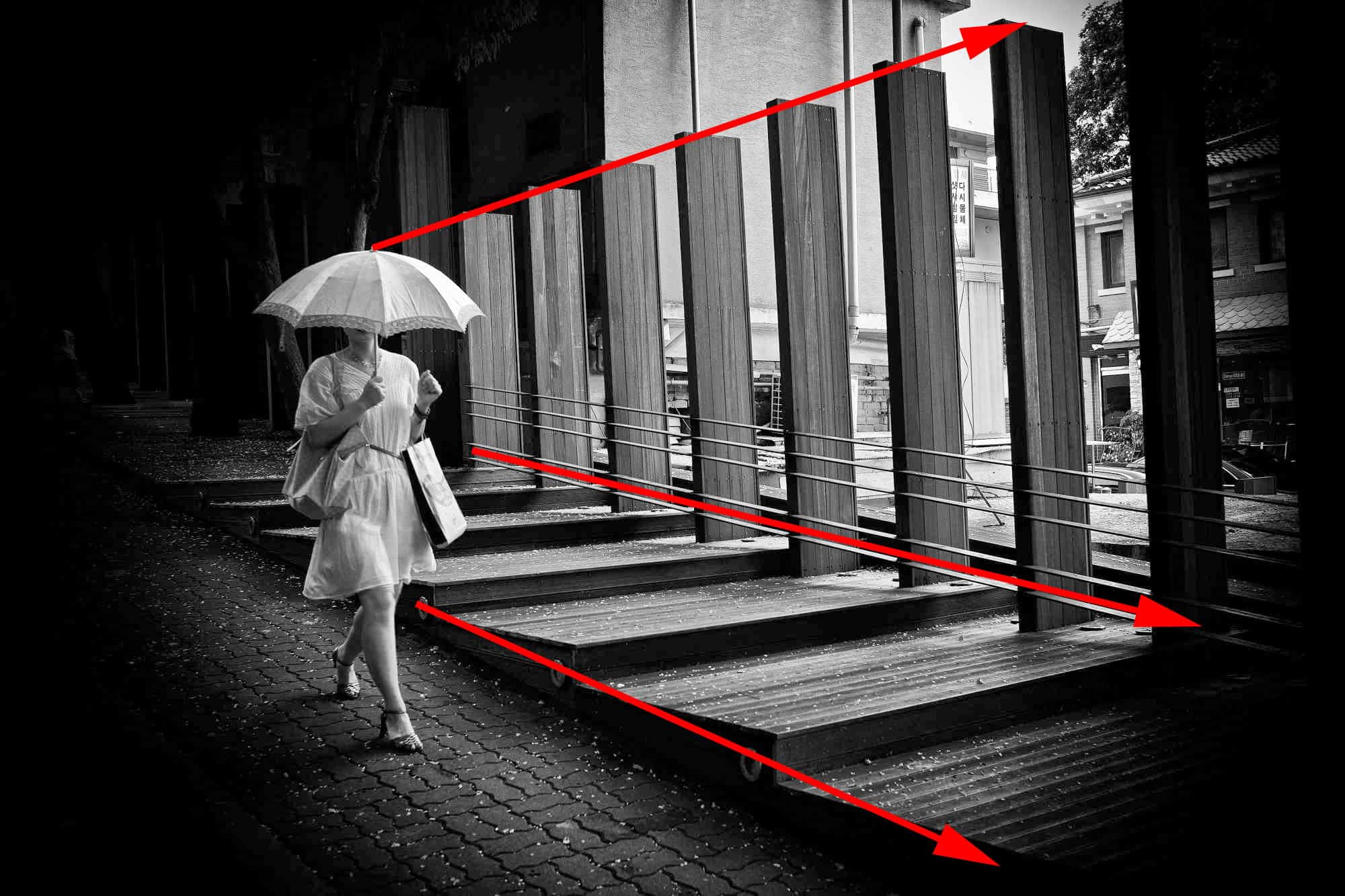Diagonal lines generally work well to draw the eye of an images viewer through the photograph. Let me show you using an example.

Diagonal Leading Lines In Photography
Leading the eye with diagonal lines.

. Diagonal Lines The human eye loves diagonal lines in photography or in nature especially when they lead at a sharp angle away from the edges of the frame both contrasting and complementing the vertical and horizontal boundaries that confine an image. When diagonal lines lead directly to the focal point of an image they are being used as leading lines. Diagonal lines convey a more dynamic scene.
Most often diagonal lines are visually followed from foreground to background left to right so in these cases your subject should be either at the start or end of your line to maximize impact. They have the freedom to move around and lead the viewer to the focal point of an image. Take a look at the tree on the far left side of the photo.
When done correctly you can even add depth and a sense of perspective. Like the rule of thirds leading lines are a compositional element that can be used across all kinds of photography from portraits to landscape shots. In fact diagonals are pretty easy to find.
Leading lines can be anything. Like reading from left to right in photography diagonal lines use the same method. These lines help keep our eye in the frame and draw attention to the subject.
If you do movement occurs. Diagonal lines are used to add dynamism to an image to convey movement or to lead the viewers eyes to the point of interest. In such a way they lead us from foreground to background highlighting the main subject at the beginning or end of the line.
This is because its natural for our eyes to scan from left to right. But what makes diagonals so great for photography. Leading lines composition technique is the easiest to understand and apply in landscape photography.
They are somewhat unbalanced and can help draw the eye to the photo. Horizontal lines can indicate distance and vertical lines can indicate height balance strength. They can be a road or a line of trees leading you somewhere.
Imagine you are driving through a forest and you see beautiful line of. Leading lines in photography direct the viewers attention to other key components. Diagonal lines in photography create a feeling of movement and change.
Leading lines are a powerful composition element in photography that you can utilize when taking photos. You can use leading lines to add interest to your scene tell a. They convey depth and perspective in the image.
Diagonal lines show as tilted or slanted lines in images. The viewer is intrigued to see where the diagonal line will take him. Its best to use diagonal leading lines from the bottom left corner of the frame and up diagonally as our eyes are naturally looking that direction.
Any edge between two surfaces is a line. If you lean to a 45-degree position theres a good chance youll topple over. When using diagonal leading lines the photographer implies a sense of motion and adds depth to the image.
They lead the viewers eye through the scene. Diagonal lines are synonymous with movement flow and acceleration. Take a look at the tree on the far left side of the photo.
Lets take a look at the different line elements you can use when composing your photos including leading lines vertical lines diagonal lines and horizon lines. They successfully cope with their main task to guide the viewer through the scene. What do diagonal lines represent in photography.
They create points of interest as they intersect with other lines and often give images depth by suggesting perspective. When viewing diagonal lines in an image there are two terms to consider. Shoot with a DSLR.
When it comes to leading lines they can be natural or man-made. Diagonal Leading Lines. The first one you notice is the diagonal line of the train cars and train track.
The place where the lines lead should be an important element in the photo. Leading lines in iPhone photography. You may have done that too it comes to us naturally.
There are a few leading lines in this photo taken by Richey Oliver. We expect something on a diagonal line to slide off and you cant easily lean up against a diagonal line without slipping. The best way to use diagonal lines is to present them from the bottom corner of the image to the opposite top corner.
Diagonal leading lines create change or movement within a photo creating a strong sense of depth. In fact we compose some photographs using leading lines unknowingly. The Orientation of Lines.
Vertical or horizontal lines convey a sense of stability or a static feel to an image. Leading lines are a powerful composition element in photography that you can utilize when taking photos. In other words they help take the viewer on a visual journey.
Action and mobility are displayed. This tip builds on the previous one on Working the Lines in your Photography. They can be people and repetitive objects like railroad tracks says photographer Felipe Silva.
This provides an almost three-dimensional photo. Unlike horizontal and vertical lines that feel strong reassuring and restful a diagonal line in photos creates tension and energy. They start somewhere along.
They lead the eye from the left side to the right side. Most scenes include a strong diagonal or two plus you can turn any straight line into a diagonal simply by turning your camera. For one diagonals act as leading lines.
How to use leading lines for awesome photography composition. When you want to provide a sense of change motion or direction a diagonal line is a wonderful option. The tension of the diagonal line versus a horizontal or vertical line makes the composition more engaging.
The branches lead to the train on the right side. Shadows and rails by David Pavlovic. The type and general direction of lines in your image convey meaning inside the photograph.
Diagonal lines suggest action and can add depth to a shot. Often a more robust composition is achieved with the leading lines technique when a primary subject is on the other end.

Using Diagonal Lines In Photography Line Photography Composition Photography Symmetry Photography

Diagonal Lines In Photography 11 Tips Examples

5 Diagonal Photography Composition Tips

How To Use Diagonal Lines In Photography Composition Phototraces

Diagonal Lines In Photography All You Need To Know Pixinfocus

7 Leading Line Photography Composition Tips

Diagonal Leading Lines In Photography Composition Line Photography Composition Photography Architecture Photography

0 comments
Post a Comment